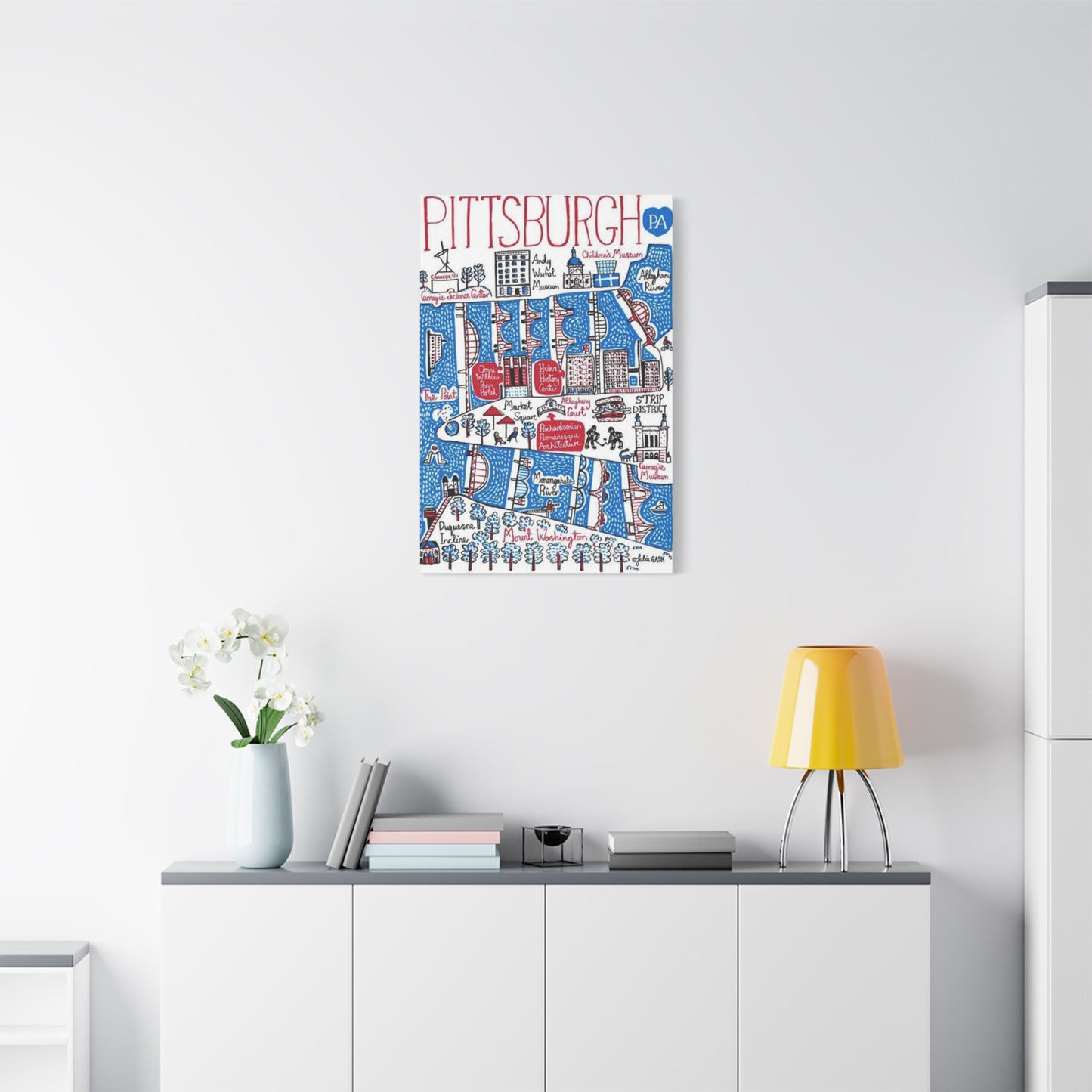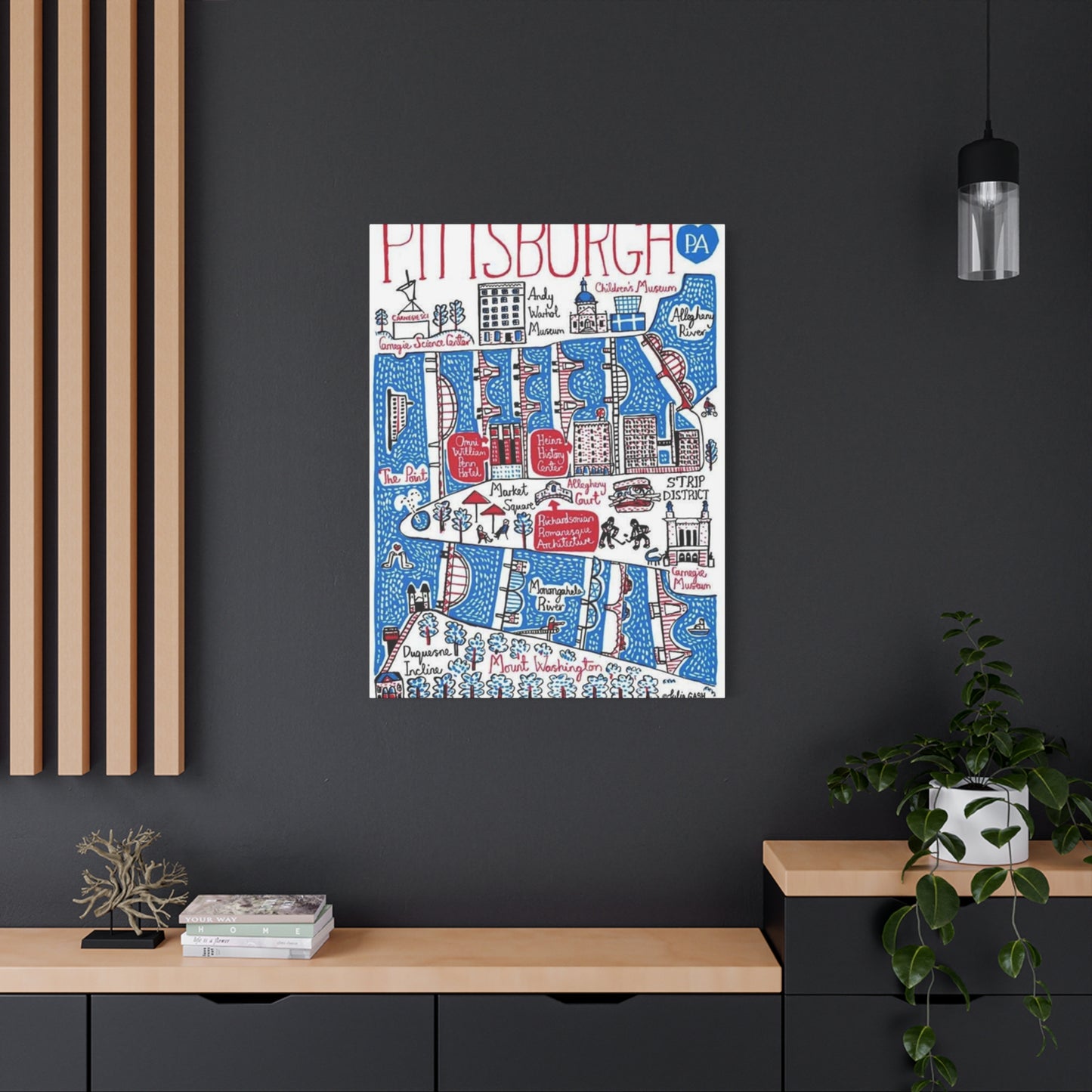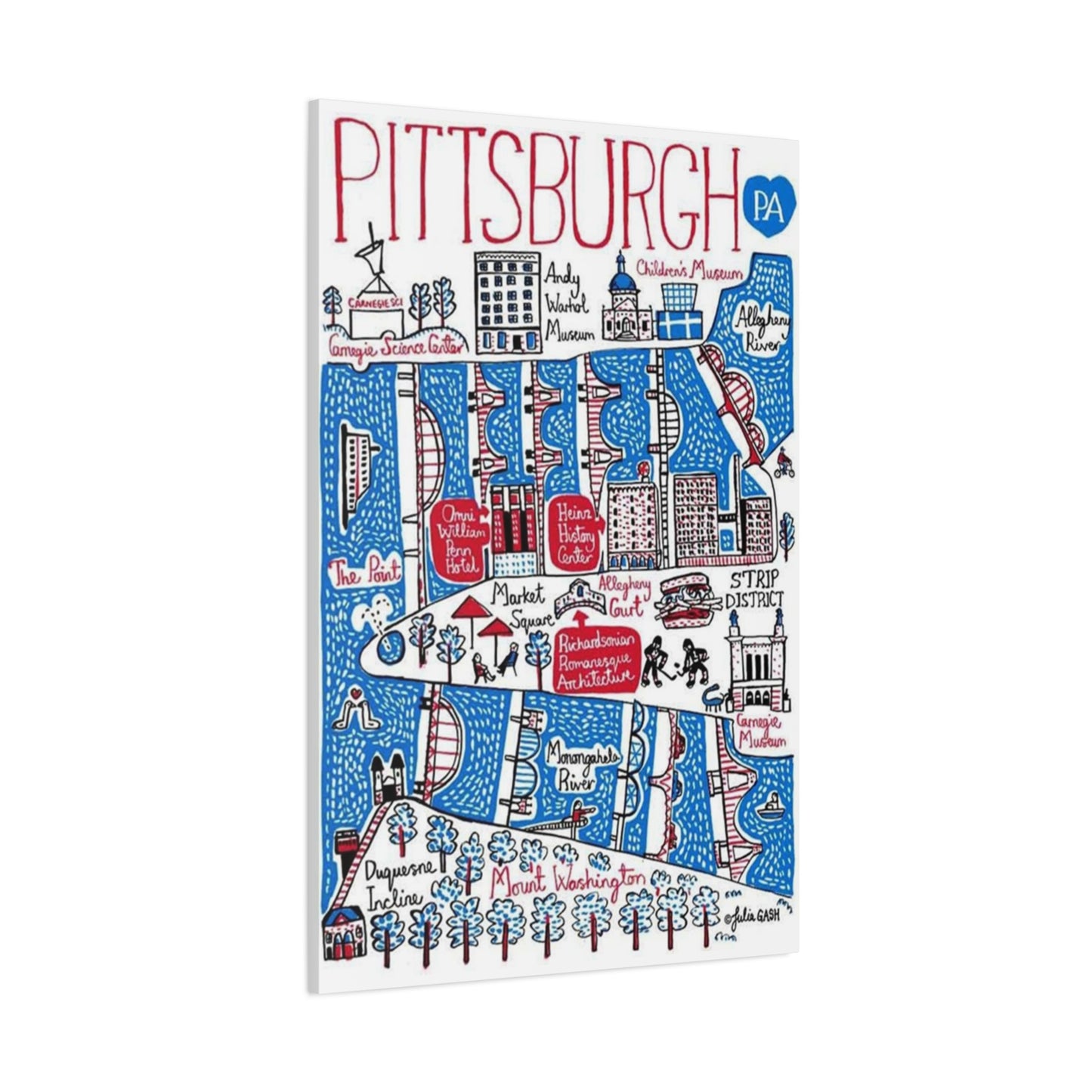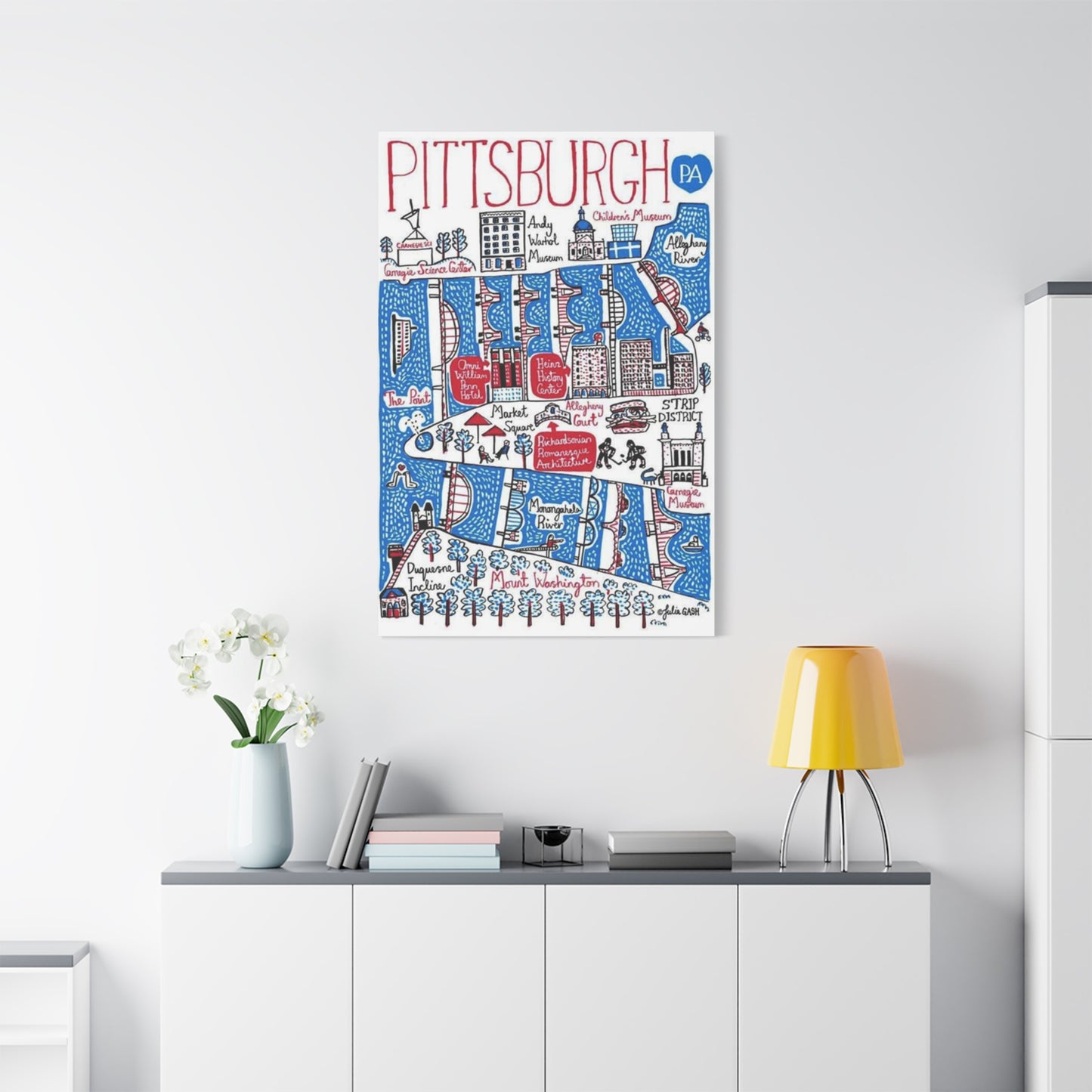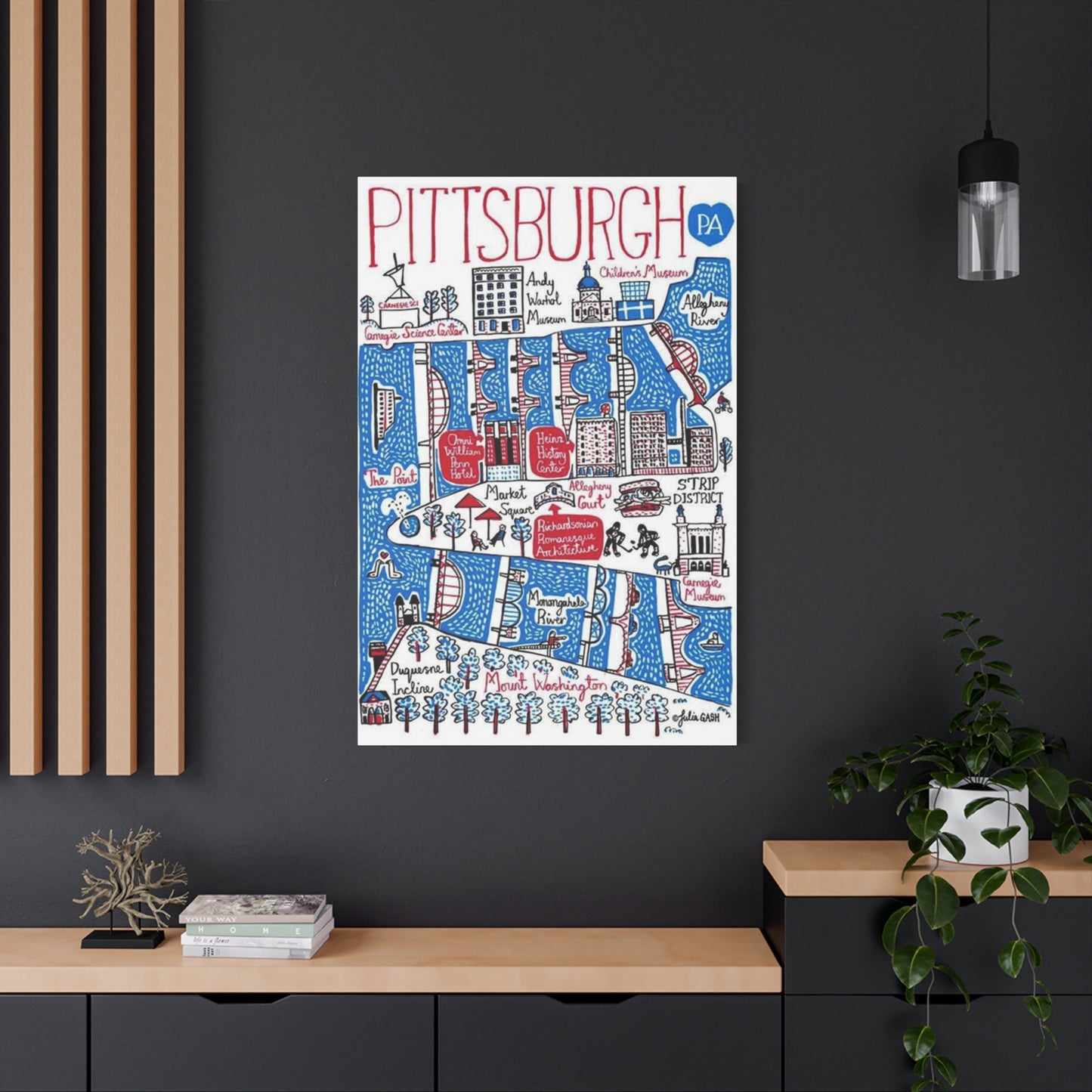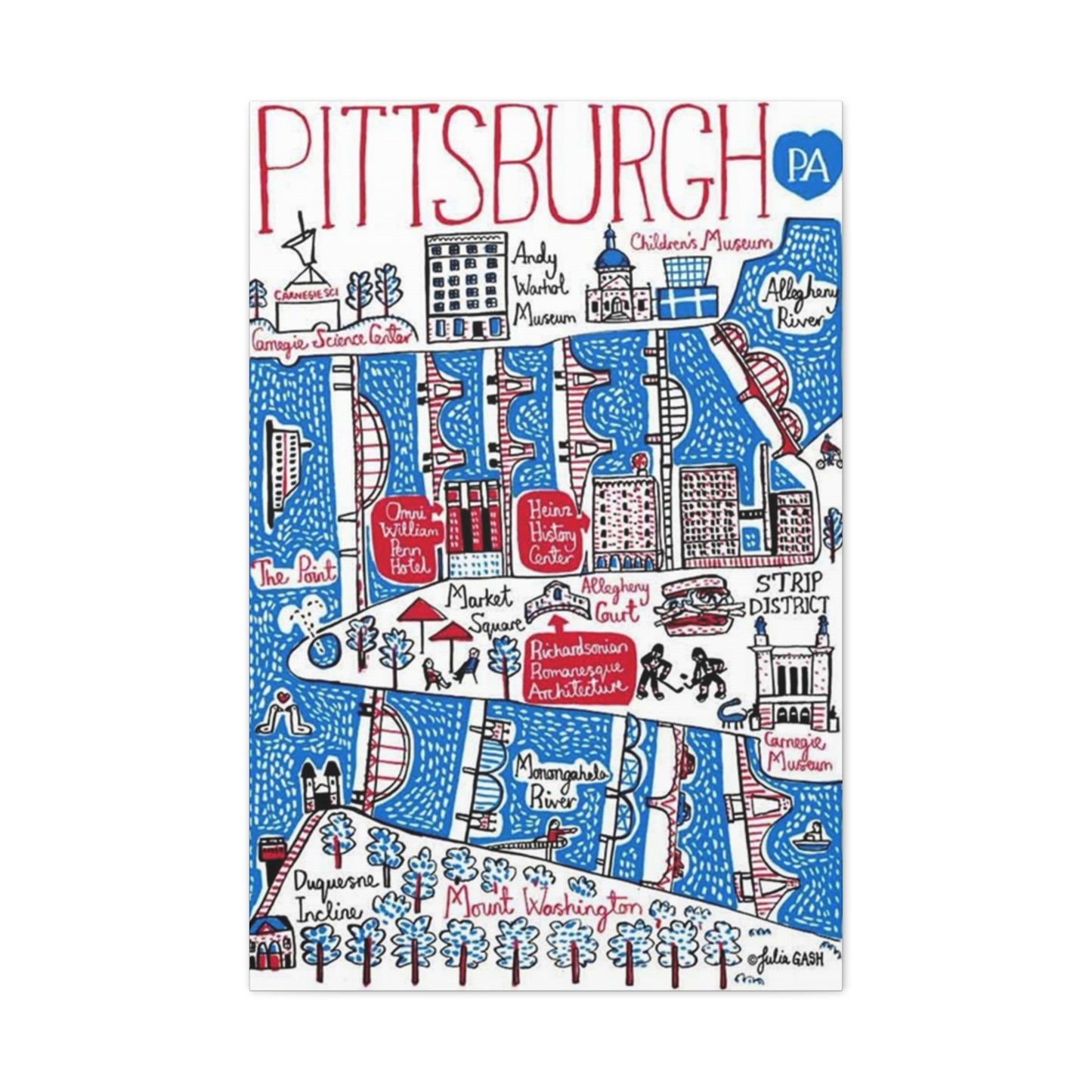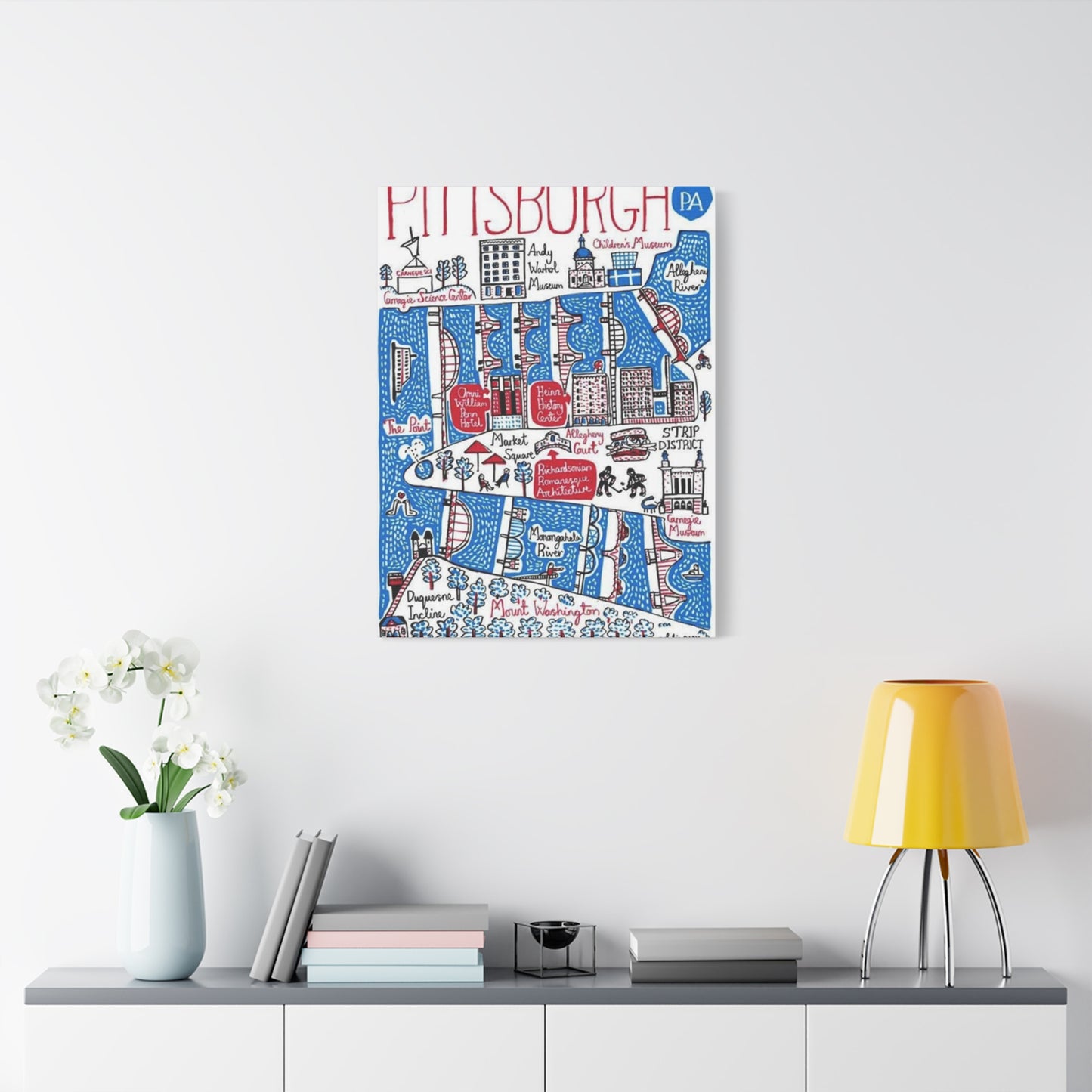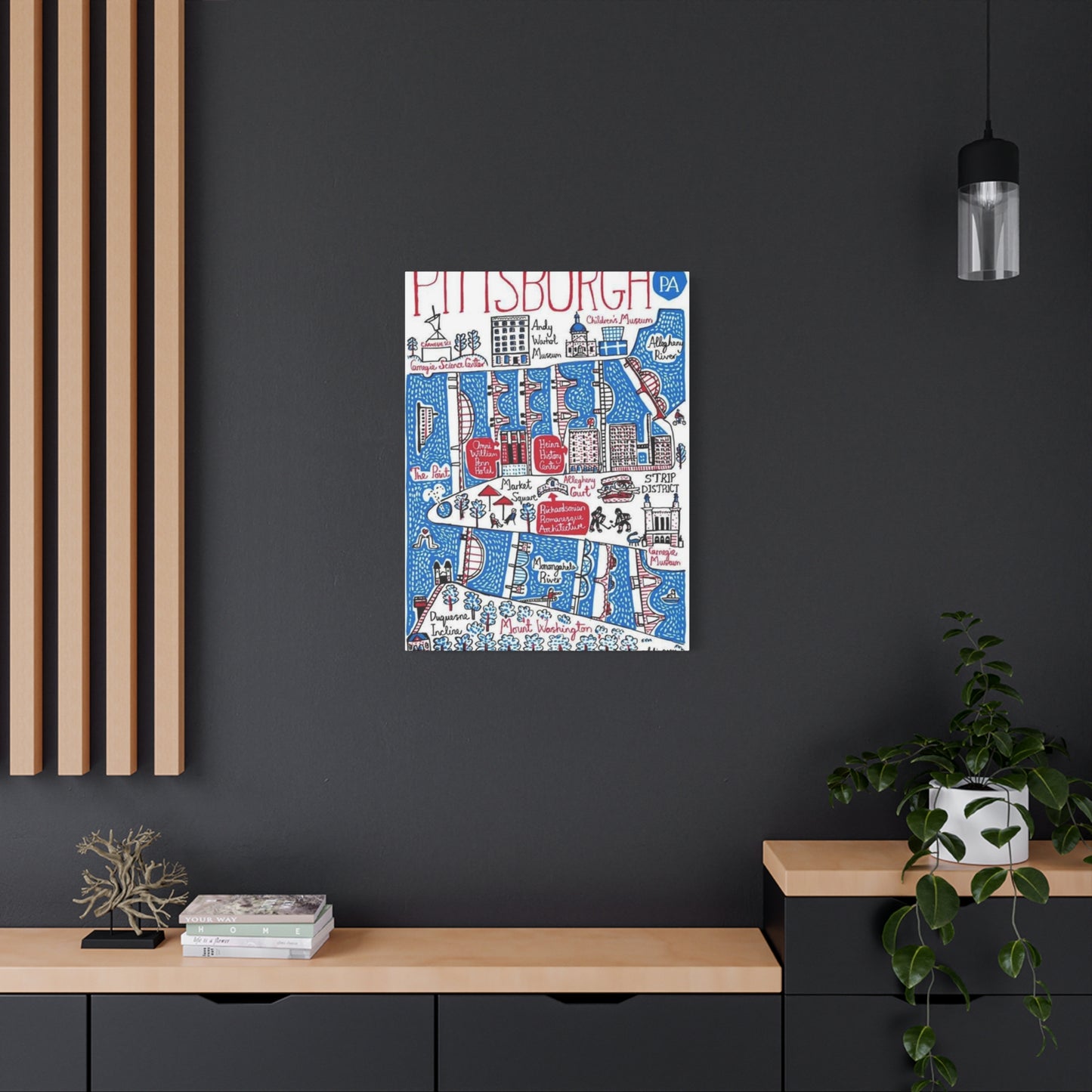Pittsburgh City Graffiti Poster Wall Art: The Ultimate Guide to Urban Art Collection
Urban street art has transformed from rebellious markings on city walls to sophisticated gallery pieces that command attention in contemporary homes and offices. The evolution of this art form represents a cultural shift in how society perceives creative expression. Pittsburgh, with its rich industrial heritage and vibrant arts community, has become a focal point for this transformation. The city's graffiti scene tells stories of resilience, community identity, and artistic innovation that transcend traditional boundaries.
When you bring Pittsburgh city graffiti artwork into your living space through canvas prints and posters, you're not just decorating walls; you're participating in a cultural dialogue that spans generations. These pieces carry the energy of urban landscapes, the grit of steel city streets, and the vibrancy of a community that has reinvented itself through art. The raw authenticity captured in street art photography offers viewers a window into the soul of Pittsburgh, where industrial legacy meets contemporary creativity.
The appeal of graffiti-inspired wall art lies in its ability to inject personality and edge into any environment. Unlike mass-produced generic artwork, pieces featuring authentic Pittsburgh street scenes offer uniqueness and character. Each canvas print preserves a moment in time, capturing the artistic expression that might be temporary on city walls but becomes permanent in your home. This preservation of urban culture through high-quality prints allows art enthusiasts to own a piece of Pittsburgh's creative spirit without compromising the integrity of public spaces.
Exploring Different Styles and Techniques in Street Art Visualization
The world of graffiti encompasses numerous artistic styles, each with distinct characteristics and cultural significance. Traditional bubble letters, wildstyle pieces, stencil art, and throw-ups represent just a fraction of the techniques employed by street artists. Pittsburgh's graffiti landscape showcases this diversity, with artists drawing inspiration from both East Coast hip-hop culture and contemporary fine art movements.
Bubble letters emerged as one of the earliest graffiti styles, characterized by rounded, inflated letterforms that prioritize readability while maintaining artistic flair. These approachable designs work exceptionally well in residential settings, offering visual interest without overwhelming viewers. When translated to canvas prints, bubble letter compositions bring playful energy to spaces, making them ideal for creative studios, youth rooms, or casual living areas.
Wildstyle represents the opposite end of the complexity spectrum, featuring interlocking letters, arrows, and abstract elements that create intricate visual puzzles. This highly stylized approach demands viewer engagement and rewards careful observation. Pittsburgh artists who master wildstyle often incorporate local symbols and references into their work, creating pieces that resonate deeply with residents while intriguing visitors. Canvas reproductions of wildstyle graffiti serve as conversation starters and statement pieces in modern interiors.
Stencil art gained prominence through political movements and social commentary, offering artists the ability to reproduce complex images with precision. This technique bridges street art and fine art, often incorporating photorealistic elements alongside graphic design principles. Pittsburgh's street artists have adopted stenciling to create powerful portraits and messages that reflect the city's values and history. When featured on wall art, these stenciled designs bring sophistication and depth to any space.
Character-based graffiti, featuring cartoons, portraits, and fantastical creatures, adds narrative elements to urban landscapes. These figurative works humanize street art, making it more accessible to broader audiences. Pittsburgh's character artists often create pieces that reflect local legends, cultural icons, or original mascots that embody the city's spirit. Canvas prints featuring these characters inject whimsy and storytelling into interior design schemes.
The Historical Evolution of Graffiti Culture in American Cities
Understanding the roots of graffiti culture enriches appreciation for contemporary urban art pieces. The modern graffiti movement originated in Philadelphia and New York during the late 1960s and early 1970s, when young artists began marking their presence throughout urban environments. What started as simple tags evolved into elaborate murals that transformed neglected spaces into outdoor galleries.
Pittsburgh's entry into this cultural movement came slightly later but with equal passion. The city's industrial decline in the 1980s left abandoned buildings and structures that became canvases for emerging artists. These spaces provided freedom for experimentation, allowing Pittsburgh's graffiti scene to develop its unique character. The intersection of working-class grit and artistic ambition created a distinctive aesthetic that continues to define the city's street art.
The 1990s brought increased recognition of graffiti as legitimate art form, with galleries beginning to exhibit street artists' work and collectors seeking pieces for private collections. This legitimization process faced resistance from both traditionalists who questioned graffiti's artistic merit and street purists who viewed commercialization as betrayal. Pittsburgh navigated these tensions by fostering dialogue between artists, authorities, and communities, resulting in designated legal walls and commissioned murals that beautify neighborhoods.
The digital age revolutionized how graffiti art reaches audiences. Photography and printing technologies now allow faithful reproduction of street art, making these urban masterpieces accessible to people worldwide. High-resolution canvas prints capture every detail of original works, from spray paint textures to color gradients, preserving the authenticity that makes graffiti compelling. This democratization of urban art allows anyone to own museum-quality pieces that reflect Pittsburgh's creative heritage.
Choosing the Perfect Canvas Print Size for Your Space
Selecting appropriate dimensions for wall art significantly impacts visual effect and room dynamics. Canvas prints featuring Pittsburgh graffiti come in various sizes, each suited to different applications and environments. Understanding spatial relationships and design principles helps ensure your chosen artwork enhances rather than overwhelms or underwhelms your space.
Small canvas prints, typically ranging from eight by ten inches to sixteen by twenty inches, work beautifully in intimate settings or as part of gallery wall arrangements. These compact pieces suit bedrooms, home offices, or hallways where space constraints limit larger installations. Pittsburgh graffiti images in smaller formats retain detail while providing flexibility for creating custom arrangements. Multiple small prints can form cohesive collections that tell visual stories or showcase different artistic styles from across the city.
Medium-sized canvases, measuring between twenty by thirty inches and thirty by forty inches, represent the most versatile option for residential and commercial spaces. These dimensions provide sufficient presence to serve as focal points without dominating rooms. In living rooms, medium prints featuring Pittsburgh street art can anchor conversation areas, positioned above sofas or mantels. Office environments benefit from medium canvases that add personality without distracting from professional atmospheres.
Large-scale canvas prints, exceeding forty inches in any dimension, create dramatic statements that transform entire walls into artistic expressions. These substantial pieces suit spacious rooms with high ceilings and ample wall space. Pittsburgh graffiti images at large scale immerse viewers in urban landscapes, bringing the energy of city streets into homes and businesses. Loft apartments, creative studios, and modern offices particularly benefit from oversized canvases that embrace bold design philosophies.
Extra-large and panoramic formats push boundaries further, spanning multiple feet in width or height. These installations require careful planning but deliver unmatched impact. Panoramic prints capturing Pittsburgh's graffiti-covered bridges or multi-story murals provide sweeping views that celebrate the scale of urban art. Such pieces suit feature walls in open-concept spaces, lobbies, or any environment seeking maximum visual drama.
Color Psychology and Its Application in Urban Art Selection
Colors profoundly influence mood, perception, and emotional response, making color selection crucial when choosing graffiti-inspired wall art. Pittsburgh street art encompasses the full spectrum, from vibrant primaries to subtle earth tones, each palette creating distinct atmospheric effects in interior spaces.
Bold primary colors dominate traditional graffiti, with reds, blues, and yellows creating high-energy compositions that demand attention. These vibrant hues stimulate creativity and conversation, making them ideal for social spaces, creative studios, or any environment benefiting from energetic atmospheres. Pittsburgh graffiti pieces featuring bright color schemes inject vitality into neutral interiors, serving as dynamic focal points that energize entire rooms.
Warm color palettes incorporating reds, oranges, and yellows evoke passion, excitement, and warmth. These hues create inviting atmospheres in living spaces while stimulating appetite in dining areas. Pittsburgh street art rendered in warm tones connects viewers to the city's industrial heritage, recalling the glow of steel mills and sunset over river valleys. Canvas prints emphasizing warm colors work exceptionally well in spaces seeking comfortable, welcoming ambiances.
Cool color schemes featuring blues, greens, and purples promote calmness, focus, and introspection. These palettes suit bedrooms, meditation spaces, or professional environments where concentration matters. Pittsburgh graffiti artists often incorporate cool tones when addressing themes of water, sky, or urban nightscapes. Canvas reproductions emphasizing these colors help create serene environments that balance the edgy nature of street art with peaceful aesthetics.
Monochromatic and grayscale approaches offer sophisticated alternatives to colorful compositions. Black and white graffiti photography emphasizes form, texture, and contrast while providing timeless elegance. These neutral pieces integrate seamlessly with existing color schemes, allowing flexibility as design preferences evolve. Pittsburgh street scenes rendered in monochrome highlight architectural elements and artistic techniques without color distractions, appealing to minimalist and modern design sensibilities.
Metallic accents and unconventional colors push creative boundaries, with golds, silvers, and neons adding contemporary flair. These specialty finishes catch light dynamically, creating visual interest that changes throughout the day. Pittsburgh artists experimenting with metallic paints and fluorescent colors produce works that feel futuristic while maintaining street art authenticity. Canvas prints incorporating these elements appeal to collectors seeking cutting-edge aesthetics.
Material Quality and Printing Techniques That Ensure Longevity
The quality of materials and printing processes determines both visual appeal and durability of canvas wall art. Understanding these technical aspects helps buyers make informed decisions that ensure their Pittsburgh graffiti prints remain vibrant and structurally sound for years.
Canvas material itself varies in weight, texture, and composition. Premium polyester-cotton blend canvases offer optimal balance between durability and print quality. These materials accept inks beautifully while resisting warping, sagging, and environmental damage. Pure cotton canvases provide traditional fine art aesthetics with superior texture but may cost more. For Pittsburgh graffiti reproductions, slightly heavier canvases better support bold colors and fine details characteristic of street art.
Stretcher bars, the wooden frames that support canvas, significantly impact final product quality. Museum-quality bars use kiln-dried wood resistant to warping and feature proper bracing for larger sizes. Thick stretcher bars, typically measuring one and a half inches in depth, create gallery-wrap presentations where images extend around edges. This frameless approach suits modern aesthetics while eliminating additional framing costs.
Printing technologies have advanced dramatically, with giclée printing representing the gold standard for fine art reproduction. This process uses archival-quality inks and high-resolution printers to achieve exceptional color accuracy and detail. Pittsburgh graffiti images printed via giclée methods capture spray paint textures, color gradients, and intricate details invisible in lower-quality reproductions. The archival nature of giclée inks ensures colors resist fading for decades when properly displayed.
UV-resistant coatings provide additional protection against environmental factors that degrade artwork over time. These treatments prevent sunlight from breaking down inks and canvas fibers, crucial for pieces displayed near windows or in brightly lit spaces. For Pittsburgh street art reproductions, UV protection maintains the bold colors and high contrast that define graffiti aesthetics.
Water-resistant treatments offer practical benefits, particularly in humid environments or high-traffic areas where accidental splashes might occur. These coatings don't significantly alter visual appearance while providing peace of mind. Kitchens, bathrooms, and commercial spaces especially benefit from this added protection.
Framing Options That Complement Urban Aesthetic Themes
While many canvas prints feature gallery-wrap presentations that eliminate framing needs, adding frames can enhance certain pieces and better integrate them into specific design schemes. Understanding framing options helps optimize visual impact of Pittsburgh graffiti wall art.
Frameless gallery-wrap installations embrace minimalist modern aesthetics, allowing artwork to speak without distraction. This approach works particularly well for graffiti pieces, as it mirrors the unframed nature of street art itself. The image wrapping around canvas edges creates three-dimensional effects that add depth and contemporary flair. For Pittsburgh urban art, gallery wraps maintain authenticity and edge that framing might diminish.
Floating frames create subtle borders around gallery-wrapped canvases without covering edges, providing definition while maintaining frameless aesthetics. These frames typically use thin metal or wood that sits slightly away from canvas, creating shadow gaps that emphasize artwork's physical presence. For graffiti pieces, floating frames add sophistication without compromising urban character.
Traditional wooden frames offer countless customization options, from rustic reclaimed wood to sleek modern profiles. For Pittsburgh industrial-themed graffiti art, distressed or weathered wood frames reinforce urban aesthetics while adding warmth. Dark walnut or ebony frames create dramatic contrasts that make colors pop, while lighter woods provide subtle framing that doesn't compete with artwork.
Metal frames align perfectly with urban industrial themes, offering modern alternatives to wood. Aluminum and steel frames in black, silver, or brushed finishes complement graffiti's contemporary edge. These frames work exceptionally well in loft spaces, modern offices, or any environment emphasizing industrial design elements. For Pittsburgh steel city imagery, metal frames create thematic connections that resonate with local heritage.
Shadow box frames add depth by creating space between canvas and glazing, resulting in dramatic three-dimensional presentations. These frames suit mixed-media pieces or artwork benefiting from physical separation from protective glass. While less common for canvas prints, shadow boxes can transform Pittsburgh graffiti reproductions into museum-quality installations.
Placement Strategies for Maximum Visual Impact
Strategic artwork placement transforms good pieces into stunning focal points that define spaces. Understanding design principles specific to graffiti-inspired wall art ensures Pittsburgh urban prints achieve their full potential.
The sixty-inch rule provides excellent starting guidance, suggesting artwork centers should hang approximately sixty inches from floor level, matching average human eye height. This standard ensures comfortable viewing without neck strain. For Pittsburgh graffiti pieces hung above furniture, allow six to twelve inches between furniture top and artwork bottom, creating visual connections without crowding.
Creating gallery walls allows multiple Pittsburgh graffiti prints to form cohesive narratives larger than individual pieces. Successful gallery arrangements balance sizes, colors, and subject matter while maintaining consistent spacing between frames. Planning layouts on floor before hanging prevents wall damage from experimental placement. Gallery walls work beautifully for showcasing Pittsburgh's diverse street art styles, from photographic documentation to abstract interpretations.
Anchor walls benefit from single statement pieces that command attention and define room character. Large Pittsburgh graffiti canvases serve this purpose brilliantly, particularly in living rooms, bedrooms, or office lobbies. When designating anchor walls, choose locations visible from room entrances and main seating areas, ensuring artwork receives appropriate attention.
Negative space surrounding artwork influences perceived importance and viewing experience. Generous spacing around pieces allows them to breathe and prevents visual clutter. For bold Pittsburgh graffiti prints with intense colors or complex compositions, extra negative space helps viewers appreciate details without overwhelming rooms.
Lighting dramatically affects artwork appearance and viewer experience. Natural light showcases colors beautifully but requires UV protection to prevent fading. Artificial lighting offers control and drama through directional spotlights or picture lights that highlight specific pieces. For Pittsburgh urban art featuring metallic elements or textured canvases, adjustable lighting creates dynamic effects that change throughout day.
Incorporating Street Art into Various Interior Design Styles
Pittsburgh graffiti wall art adapts surprisingly well to diverse design aesthetics, from ultra-modern to eclectic vintage. Understanding how urban art integrates with different styles helps create cohesive interiors.
Industrial design naturally pairs with graffiti aesthetics, sharing raw authenticity and urban origins. Exposed brick, concrete floors, metal fixtures, and reclaimed wood provide perfect backdrops for Pittsburgh street art. The contrast between rough industrial elements and colorful graffiti creates dynamic tension that energizes spaces. Loft apartments and converted warehouse spaces particularly benefit from this synergy.
Modern minimalist interiors might seem incompatible with graffiti's complexity, yet carefully selected pieces can provide exactly the contrast minimalism needs. Black and white Pittsburgh graffiti photography offers visual interest without disrupting clean lines and neutral palettes. Single statement pieces become artistic focal points that prevent minimalist spaces from feeling sterile.
Contemporary design embraces bold colors and artistic expression, making it ideal for incorporating vibrant Pittsburgh street art. Mixed materials, sculptural furniture, and open floor plans characteristic of contemporary style complement graffiti's modern edge. Multiple pieces showcasing different artists and techniques can coexist harmoniously in contemporary settings that celebrate creative diversity.
Eclectic interiors thrive on unexpected combinations, allowing Pittsburgh graffiti prints to mix with vintage finds, global textiles, and family heirlooms. This approach requires confident curation but delivers uniquely personal spaces. The key lies in identifying common threads like color families or thematic elements that unite disparate pieces.
Scandinavian design principles emphasizing simplicity, functionality, and natural light might seem distant from graffiti culture, yet subtle integration creates striking results. Smaller Pittsburgh street art pieces or monochromatic compositions can accent predominantly white spaces without overwhelming hygge-inspired coziness. The contrast between Scandinavian serenity and urban energy creates balanced, interesting environments.
The Role of Typography in Graffiti-Inspired Wall Art
Letters form the foundation of graffiti culture, making typography central to understanding and appreciating street art. Pittsburgh artists have developed distinctive lettering styles that reflect both regional influences and individual creativity.
Tag typography represents graffiti's most basic form, featuring stylized signatures that establish artist identity. These quick-executed marks prioritize style over legibility, with letters flowing together in continuous movements. Pittsburgh tags often incorporate regional slang or neighborhood references, creating localized visual languages. Canvas prints featuring tag typography bring raw street energy indoors while celebrating individual artistic voices.
Blockbuster letters dominate urban landscapes through sheer size and bold simplicity. These large, legible letterforms fill walls with solid colors and strong outlines, making immediate impacts from distance. Pittsburgh blockbuster pieces often claim prominent locations, announcing presence with confidence. Reproductions of these monumental works bring that commanding energy into interior spaces, making powerful statements.
Script and calligraphic influences appear when graffiti artists incorporate formal lettering traditions. Flowing curves and elegant connections create sophisticated alternatives to aggressive angular styles. Some Pittsburgh artists blend calligraphy with street aesthetics, producing work that bridges high and low art. Canvas prints featuring these hybrid styles offer refined options for collectors seeking urban edge with classical elegance.
3D lettering techniques create illusions of depth through shading, highlighting, and perspective manipulation. These complex compositions require significant skill and planning, resulting in visually stunning pieces that reward close examination. Pittsburgh artists producing 3D work often incorporate local architectural elements or steel industry imagery into dimensional designs. High-quality canvas reproductions preserve these intricate effects, making them accessible for home display.
Experimental typography pushes boundaries by deconstructing letters into abstract forms or incorporating unconventional materials and techniques. These avant-garde approaches challenge viewers to reconsider what constitutes language and communication. Pittsburgh's progressive art scene supports such experimentation, resulting in innovative works that blur lines between graffiti, graphic design, and fine art.
Understanding Copyright and Authenticity in Street Art Reproduction
Legal and ethical considerations surrounding street art reproduction deserve careful attention from collectors and decorators. Understanding these issues ensures purchases support artists while respecting intellectual property rights.
Copyright law applies to graffiti just as to any creative work, meaning artists retain rights to their creations even when executed on public or private property without permission. This creates complex situations where artwork exists illegally yet receives legal copyright protection. Legitimate sellers of Pittsburgh graffiti canvas prints either work directly with artists, obtain proper licenses, or reproduce works that have entered public domain.
Artist collaboration represents the ideal scenario, where street artists partner with printing companies to create authorized reproductions. These arrangements compensate creators for their work while making it available to wider audiences. Some Pittsburgh artists have embraced this model, offering limited edition prints or licensing images for canvas reproduction. Purchasing these legitimate products supports local art communities directly.
Photography of street art exists in legal gray areas, with different jurisdictions interpreting copyright differently. Some argue that photographing artwork in public spaces constitutes fair use, while others maintain artists' rights extend to all reproductions. Responsible sellers navigate these complexities by seeking permissions or focusing on works where copyright issues are resolved.
Attribution matters significantly in street art culture, where reputation and recognition drive artistic careers. Even when reproductions are legally permissible, ethical sellers credit original artists whenever possible. For Pittsburgh graffiti prints, knowing the artist behind work adds value and authenticity, connecting buyers with stories and intentions behind pieces.
Limited editions and certificates of authenticity add collectible value to street art reproductions. Numbered prints signed by artists become investment pieces that appreciate over time. While unlimited reproductions serve decorative purposes, limited editions appeal to serious collectors building curated Pittsburgh urban art collections.
Maintaining and Cleaning Canvas Wall Art Properly
Proper care extends canvas print lifespan and maintains visual appeal. Understanding maintenance requirements ensures Pittsburgh graffiti wall art remains vibrant and structurally sound.
Dust accumulation represents the primary maintenance concern for canvas prints. Regular dusting using soft, dry cloths or feather dusters prevents buildup that dulls colors and damages protective coatings. Gentle circular motions work best, avoiding excessive pressure that might damage canvas fibers or printed surfaces. For Pittsburgh graffiti pieces with heavy texture or dimensional elements, soft brush attachments on vacuum cleaners set to low suction provide effective cleaning.
Spot cleaning addresses specific stains or marks without subjecting entire pieces to moisture. Slightly damp microfiber cloths can remove most surface contaminants when used carefully. Avoiding excessive water prevents moisture damage to canvas and stretcher bars. For stubborn marks on Pittsburgh urban art prints, specialized canvas cleaning solutions designed for artwork provide safer alternatives to household cleaners.
Environmental control prevents many maintenance issues before they arise. Maintaining consistent temperature and humidity levels protects canvas from warping, cracking, or mold growth. Ideal conditions range from sixty-five to seventy-five degrees Fahrenheit with forty to fifty percent relative humidity. While these exact conditions aren't always achievable in residential settings, avoiding extreme fluctuations protects artwork investment.
Direct sunlight poses the greatest threat to canvas print longevity, causing colors to fade and materials to deteriorate. UV-protective coatings help but don't eliminate risk entirely. Positioning Pittsburgh graffiti prints away from direct sun exposure or using window treatments to filter light preserves vibrancy. In rooms with abundant natural light, rotating artwork periodically prevents uneven fading.
Professional restoration services can address damage beyond simple cleaning. Tears, water damage, or severe fading sometimes require expert intervention. Establishing relationships with local art conservators provides resources when Pittsburgh graffiti pieces need specialized care. Prevention remains more cost-effective than restoration, making proper maintenance essential.
Building Themed Collections Around Pittsburgh Urban Culture
Curating cohesive artwork collections creates more impactful displays than random individual pieces. Thematic approaches to collecting Pittsburgh graffiti prints result in meaningful assemblages that tell stories and reflect personal values.
Neighborhood-focused collections celebrate specific Pittsburgh areas known for vibrant street art. The Strip District, Lawrenceville, and Bloomfield each possess distinct artistic identities worth documenting. Collecting pieces from single neighborhoods creates geographical narratives while supporting local artists. These focused collections work beautifully in homes or businesses located within featured areas, strengthening community connections.
Artist-centered collections follow individual creators' careers, acquiring multiple works that showcase stylistic evolution and thematic interests. Many Pittsburgh graffiti artists maintain consistent visual vocabularies while experimenting with new techniques. Building collections around specific artists supports their careers while creating cohesive displays united by common creative visions.
Chronological collections document Pittsburgh street art's evolution across decades. Vintage photographs of 1980s graffiti alongside contemporary pieces illustrate how styles, techniques, and social contexts have changed. These historical collections carry educational value while preserving cultural memory that might otherwise disappear.
Color-coordinated collections prioritize aesthetic harmony over subject matter, selecting Pittsburgh graffiti pieces that share color palettes regardless of origin or style. This approach works well for integrating street art into existing interior designs with established color schemes. The unity of color creates visual cohesion while the diversity of imagery maintains interest.
Medium-specific collections might focus exclusively on stencil art, character pieces, or abstract graffiti, exploring depth within particular approaches. This specialization allows collectors to develop expertise while building unique assemblages. Pittsburgh's diverse street art scene supports such focused collecting across various mediums and styles.
The Economic Impact of Urban Art on Community Development
Street art's transformation from vandalism to valued cultural asset has generated significant economic benefits for cities embracing it. Pittsburgh's experience illustrates how graffiti and urban art contribute to neighborhood revitalization and tourism.
Property values in areas featuring prominent street art often increase as creative communities establish cultural cachet. Pittsburgh neighborhoods that welcomed murals and legal graffiti walls have experienced renewed interest from residents and businesses. This artistic transformation attracts young professionals, entrepreneurs, and creatives seeking vibrant communities, driving demand that elevates property values.
Tourism generated by street art brings outside money into local economies. Dedicated urban art tours operate in Pittsburgh, guiding visitors through neighborhoods while educating them about artists and pieces. These tourists patronize local restaurants, shops, and accommodations, multiplying street art's economic impact beyond initial artistic value. Canvas reproductions extend this benefit by allowing tourists to take pieces of Pittsburgh home, supporting local printing businesses.
Small business development follows street art, with galleries, studios, and creative enterprises clustering in artistic neighborhoods. Pittsburgh's creative districts demonstrate how public art catalyzes entrepreneurship and economic diversity. Canvas print businesses specializing in local graffiti imagery represent one example of enterprises built around urban art culture.
Commission opportunities for street artists have expanded as property owners recognize art's value. Legal murals beautify buildings while providing income for creators. Pittsburgh businesses increasingly commission custom graffiti-style murals, supporting artists while enhancing brand identities. This commercialization provides sustainable income streams that allow artists to continue creating.
Social media amplification magnifies street art's economic impact exponentially. Instagrammable murals attract visitors seeking photographic backdrops, generating organic marketing for cities. Pittsburgh street art frequently trends on visual platforms, drawing attention that translates into real-world visits and economic activity. Canvas reproductions extend this reach further, placing Pittsburgh imagery in homes worldwide.
Customization Options for Personalized Urban Art Pieces
Beyond selecting existing Pittsburgh graffiti reproductions, customization services allow creation of truly unique wall art tailored to individual preferences and spaces.
Custom sizing ensures perfect fit for specific walls or design schemes. While standard dimensions work for many applications, unusual spaces benefit from precisely measured canvases. Custom sizing prevents awkward proportions or wasted wall space, particularly in rooms with architectural quirks. For Pittsburgh graffiti collections, custom dimensions allow creation of perfectly scaled gallery walls or statement pieces that maximize available space.
Color adjustments modify existing images to better suit interior palettes. Printing technologies allow subtle color shifts that maintain artwork integrity while improving compatibility with furnishings and paint colors. Some collectors prefer desaturated versions of colorful Pittsburgh street art for sophisticated aesthetics, while others request enhanced vibrancy for bold statements.
Cropping and composition changes refocus images on specific elements, creating new artworks from existing photographs. A portion of complex Pittsburgh graffiti wall might become standalone piece emphasizing particular details. This approach generates multiple unique pieces from single source images, allowing thematic variety while maintaining stylistic consistency.
Text additions personalize artwork with names, dates, quotes, or messages. Incorporating meaningful text into Pittsburgh graffiti-inspired designs creates commemorative pieces for special occasions or customized gifts. Typography should complement existing graffiti styles to maintain visual cohesion.
Mixed media combinations blend Pittsburgh street art photography with graphic design elements, creating hybrid works that balance documentation and artistic interpretation. Abstract overlays, geometric shapes, or digital effects transform photographic reproductions into unique creative statements. These customized pieces suit collectors seeking original artwork based on Pittsburgh themes rather than straight reproductions.
Sustainable and Eco-Friendly Printing Practices
Environmental consciousness increasingly influences consumer choices, including artwork purchases. Understanding sustainable options for Pittsburgh graffiti canvas prints allows alignment of aesthetic desires with ecological values.
Water-based inks provide environmentally friendly alternatives to solvent-based products, eliminating toxic chemicals from printing processes. These inks produce vibrant colors matching traditional inks while significantly reducing environmental impact. For Pittsburgh urban art reproductions, water-based inks deliver authentic colors without ecological compromise.
Recycled canvas materials reduce demand for virgin resources while maintaining quality standards. Post-consumer recycled polyester and organic cotton canvases offer sustainable options that perform comparably to conventional materials. Some manufacturers specifically market eco-friendly Pittsburgh street art prints using exclusively recycled and organic materials.
Carbon-neutral shipping offsets transportation emissions through investments in renewable energy or reforestation projects. Many online canvas print retailers offer carbon-neutral shipping options, sometimes at modest additional cost. For environmentally conscious collectors, these programs mitigate environmental impact of receiving Pittsburgh graffiti art via delivery.
Local production reduces transportation emissions while supporting regional economies. Purchasing Pittsburgh street art prints from local printers minimizes shipping distances and supports community businesses. This approach aligns with street art's community-focused ethos while reducing ecological footprints.
Print-on-demand models eliminate waste from unsold inventory, producing items only after purchase. This approach prevents overproduction and reduces warehouse energy consumption. Many Pittsburgh graffiti canvas sellers use print-on-demand systems that align with sustainable business practices.
Street Art as Investment and Collectible Asset
While most people purchase Pittsburgh graffiti wall art for aesthetic enjoyment, understanding investment potential provides additional perspective on value and market dynamics.
Emerging artist identification represents the greatest investment opportunity, acquiring works before mainstream recognition drives prices upward. Following Pittsburgh street art scene closely allows early discovery of talented artists whose work may appreciate substantially. Limited edition prints and original pieces from rising stars offer best investment potential.
Established artist works provide safer investments with proven track records. Pittsburgh street artists who have achieved national or international recognition command higher prices with more predictable appreciation. While entry costs exceed emerging artists, established creators offer stability and prestige.
Limited editions create scarcity that drives collectible value. Numbered prints, particularly those signed by artists, become increasingly valuable as editions sell out. Pittsburgh graffiti reproductions marketed as limited editions appeal to collectors who view artwork as investment alongside decoration.
Provenance documentation establishes authenticity and ownership history, crucial for valuable pieces. Certificates of authenticity, purchase receipts, and exhibition histories increase resale value. Serious collectors of Pittsburgh urban art maintain careful records supporting future valuations.
Market trends influence street art values just as traditional art markets. Monitoring auction results, gallery sales, and online marketplaces provides insight into valuation trends. Pittsburgh artists gaining recognition through exhibitions or commissions typically experience increased demand for their work.
Benefits of Displaying Urban Art in Living Spaces
Beyond aesthetics, artwork in living environments provides measurable psychological and emotional benefits. Pittsburgh graffiti wall art offers unique advantages rooted in its cultural associations and visual characteristics.
Personal expression through décor choices affirms identity and values. Displaying Pittsburgh street art signals appreciation for urban culture, artistic innovation, and local community. This self-expression through environment contributes to psychological wellbeing and sense of authenticity in living spaces.
Conversation stimulation occurs naturally around distinctive artwork, facilitating social connections. Pittsburgh graffiti pieces prompt discussions about art, urban culture, and city history, creating shared experiences between residents and guests. These social interactions contribute to emotional wellbeing and relationship building.
Creative inspiration flows from surrounding oneself with artistic expression. Exposure to Pittsburgh graffiti's bold colors and innovative techniques stimulates creative thinking in viewers' own endeavors. Home offices and creative studios particularly benefit from inspirational artwork that encourages innovative approaches.
Stress reduction results from engaging with meaningful visual stimuli. While research traditionally focused on nature imagery, urban art enthusiasts report similar calming effects from street art that resonates personally. For Pittsburgh residents, familiar cityscapes in graffiti form provide comfort and connection to community.
Mood elevation through color and imagery impacts daily emotional states. Vibrant Pittsburgh graffiti pieces energize spaces and viewers, combating dullness and depression associated with bland environments. Strategic artwork placement in frequently used areas maximizes these psychological benefits.
Photography Considerations for Street Art Documentation
The quality of Pittsburgh graffiti canvas prints depends heavily on source photography. Understanding technical aspects of street art photography helps appreciate final product quality and informs purchasing decisions.
Resolution requirements for large-format printing demand high-megapixel cameras and proper technique. Pittsburgh street art photographed at insufficient resolution appears pixelated or blurry when enlarged to poster or canvas sizes. Professional-grade images capture fine details, texture, and color accuracy that survive scaling to wall-sized dimensions.
Lighting conditions dramatically affect photograph quality and accuracy. Ideal street art photography occurs during golden hour or overcast conditions that provide even illumination without harsh shadows. Pittsburgh's variable weather creates challenges and opportunities for photographers seeking optimal lighting. Some artists prefer dramatic shadows and contrast, while others prioritize accurate color reproduction.
Perspective correction prevents distortion in architectural photography, crucial when documenting wall murals. Wide-angle lenses introduce barrel distortion and converging lines that misrepresent artwork. Professional Pittsburgh graffiti photography employs tilt-shift lenses or post-processing perspective correction to maintain accurate proportions and angles.
Color calibration ensures printed canvases match original artwork appearances. Monitors, cameras, and printers each interpret colors differently without proper calibration. Professional photography services use color-managed workflows that produce consistent results across devices. For Pittsburgh street art reproductions, accurate color representation preserves artists' intentions and artwork impact.
Dynamic range management captures detail in bright highlights and dark shadows simultaneously. Graffiti often features extreme contrasts that exceed camera sensor capabilities. HDR techniques or careful exposure bracketing preserve detail across tonal ranges. High-quality Pittsburgh urban art prints benefit from properly managed dynamic range that reveals subtle details throughout images.
Urban Art in Business Environments
Beyond residential use, Pittsburgh graffiti wall art serves important functions in commercial settings, from small businesses to corporate offices.
Brand identity reinforcement occurs when businesses display art reflecting their values and culture. Companies targeting younger demographics or emphasizing creativity benefit from Pittsburgh street art that signals cultural awareness and contemporary attitudes. Offices displaying local graffiti art demonstrate community investment and regional pride.
Employee morale improvements result from engaging work environments. Generic corporate art does little to inspire or energize workers, while distinctive Pittsburgh urban art creates stimulating atmospheres. Creative agencies, tech companies, and startups particularly benefit from office décor that reinforces innovative cultures.
Customer experience enhancement happens when businesses create memorable, photogenic environments. Restaurants, retail stores, and hospitality businesses use Pittsburgh graffiti wall art to establish distinctive atmospheres that encourage social media sharing. This organic marketing amplifies business visibility while creating unique customer experiences.
Waiting area transformation turns potentially negative experiences into engaging environments. Medical offices, service businesses, and professional firms use artwork to reduce perceived wait times and ease client anxiety. Pittsburgh street art in waiting areas provides visual interest while communicating contemporary professionalism.
Conference room impact increases when distinctive artwork creates memorable settings for important meetings. Impressive Pittsburgh graffiti pieces in meeting spaces make lasting impressions on clients and partners. The bold, confident nature of street art reinforces business confidence and creative thinking.
Conclusion
In conclusion, Pittsburgh city graffiti poster wall art represents a vibrant and dynamic celebration of urban culture, creativity, and the spirit of a city that thrives on its unique artistic expression. This genre of wall art captures the raw energy and authentic voice of Pittsburgh’s streets, transforming bold graffiti and mural art into compelling pieces for collectors, enthusiasts, and anyone looking to infuse their spaces with the edgy, ever-evolving character of urban life.
One of the most captivating aspects of Pittsburgh graffiti poster art is its ability to showcase the city’s diverse cultural landscape. Pittsburgh’s neighborhoods boast a wide range of styles—from politically charged murals to colorful abstract designs—each reflecting the stories, struggles, and aspirations of the local community. Graffiti, often misunderstood as mere vandalism, is in reality a powerful form of self-expression and social commentary. By bringing these works into your home or office through poster art, you honor the voices and visions of Pittsburgh’s artists and celebrate the city’s rich cultural fabric.
This form of art also offers incredible versatility in interior design. Whether you favor a modern industrial loft, a cozy urban apartment, or a trendy office space, Pittsburgh graffiti posters add a bold splash of color and personality. Their graphic lines, vibrant hues, and striking compositions create visual interest and inject a sense of movement and life into otherwise static walls. These posters can serve as statement pieces or complement other urban-inspired décor elements, making them ideal for creating a cohesive, contemporary aesthetic.
Moreover, collecting Pittsburgh graffiti poster wall art is an excellent way to support and promote local artists. Many of these posters are produced in collaboration with graffiti artists or based on original murals, offering a way for fans of street art to own a piece of the city’s creative scene without the challenges of preserving outdoor murals. This connection between artist and collector fosters a deeper appreciation for the talent and passion behind the art, encouraging the growth of Pittsburgh’s artistic community.
From a historical perspective, Pittsburgh graffiti poster art also plays a role in documenting the evolution of the city’s urban landscape and culture. Murals and graffiti often respond to current events, social issues, and local identity, making these posters a visual archive of the city’s ongoing narrative. Displaying this art becomes a conversation starter, inviting dialogue about community, change, and the role of public art in shaping perceptions and inspiring action.
Technically, the production of graffiti posters has evolved with advances in printing technology. High-quality prints capture the texture, color saturation, and intricate details of the original graffiti, allowing the vibrancy of Pittsburgh’s street art to shine indoors. Choosing durable materials such as heavyweight paper or canvas ensures longevity and keeps the artwork looking fresh, even in busy or sunlit spaces.
For collectors, Pittsburgh graffiti poster wall art presents both aesthetic appeal and investment potential. Limited edition prints or signed posters add exclusivity, while mass-produced versions make urban art accessible to a wider audience. This spectrum allows both seasoned collectors and newcomers to find pieces that resonate with their tastes and budgets, cultivating a diverse and inclusive community of urban art enthusiasts.
Incorporating Pittsburgh graffiti posters into your space also encourages creative experimentation. Mixing and matching different styles, sizes, and themes can create dynamic gallery walls that reflect your personal connection to the city’s culture and your own artistic sensibilities. Pairing graffiti art with industrial furnishings, vintage elements, or minimalist décor can highlight contrasts and deepen the visual impact.
Ultimately, Pittsburgh city graffiti poster wall art is more than just decoration—it is an authentic expression of urban life, resilience, and creativity. It invites you to embrace the beauty found in street culture, challenge conventional notions of art, and celebrate the voices that shape Pittsburgh’s vibrant identity. Whether you are a local resident, a lover of street art, or a curious newcomer, these posters offer a compelling way to connect with the city’s soul and bring that energy into your everyday environment.
As urban art continues to gain recognition and appreciation, collecting Pittsburgh graffiti poster wall art stands as a meaningful tribute to the power of public expression and the transformative potential of creativity. By welcoming this art into your space, you celebrate not only the visual excitement of graffiti but also the stories, passion, and community that make Pittsburgh’s streets come alive.



















